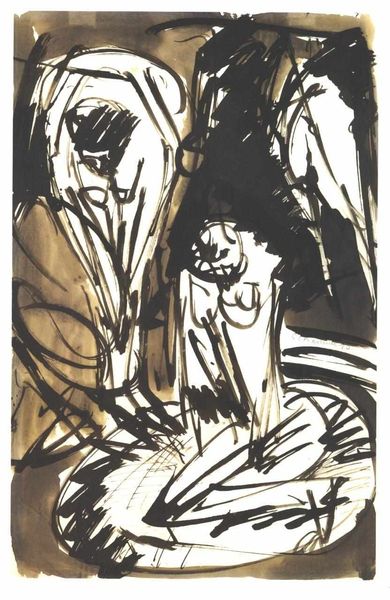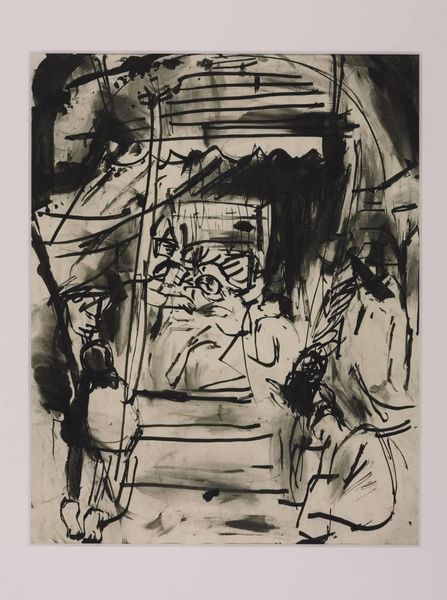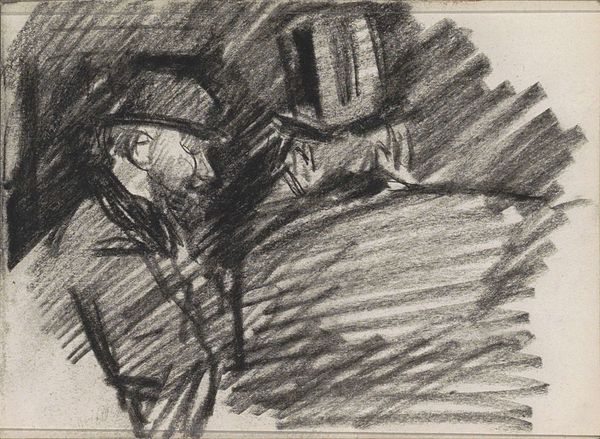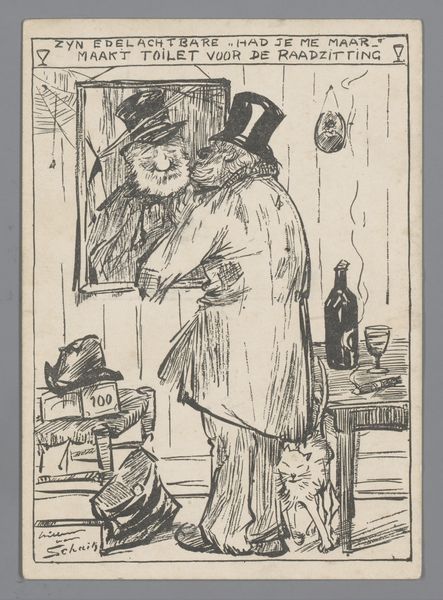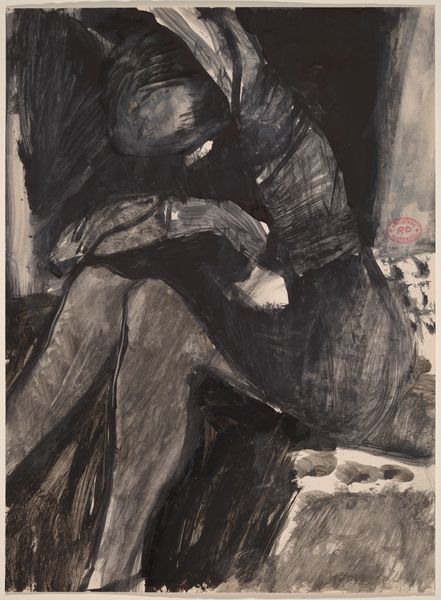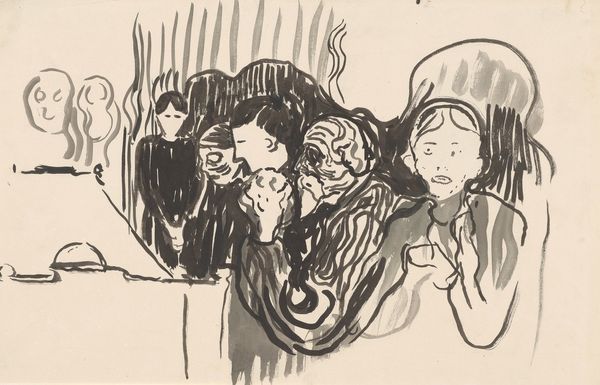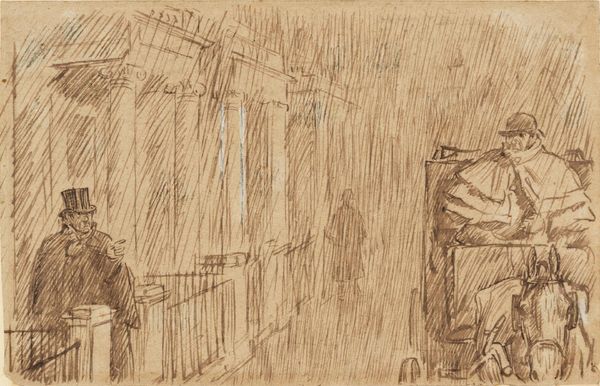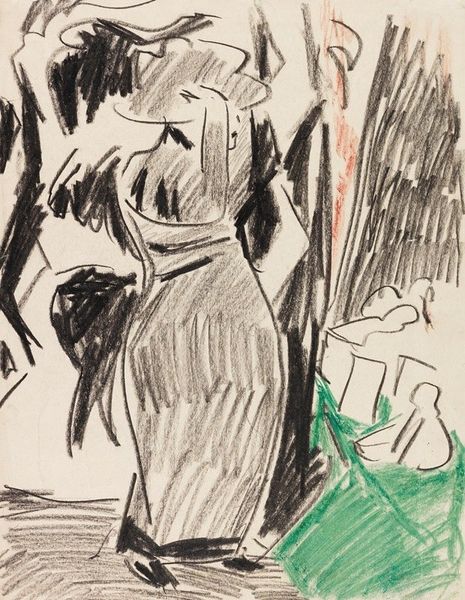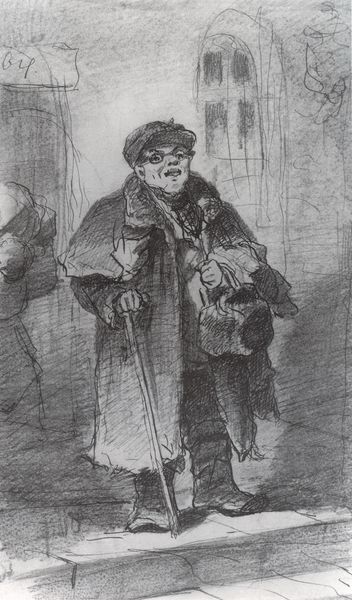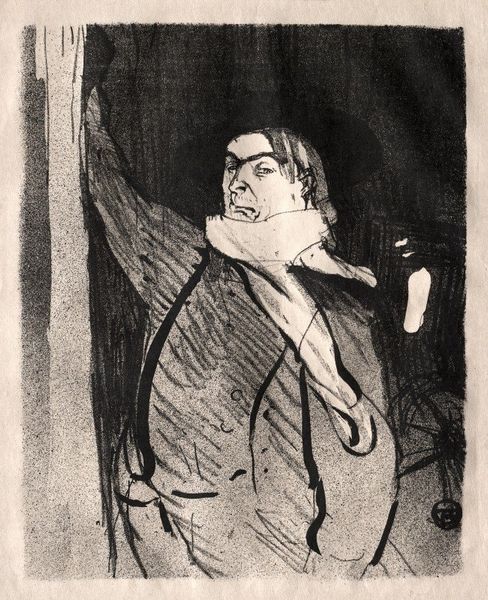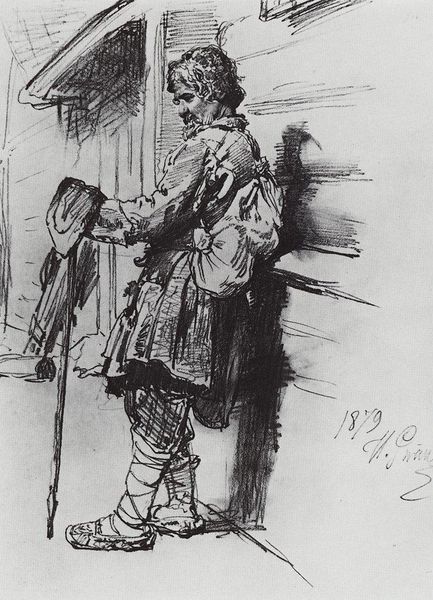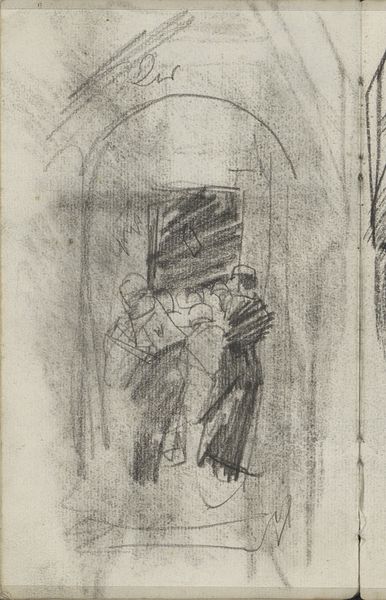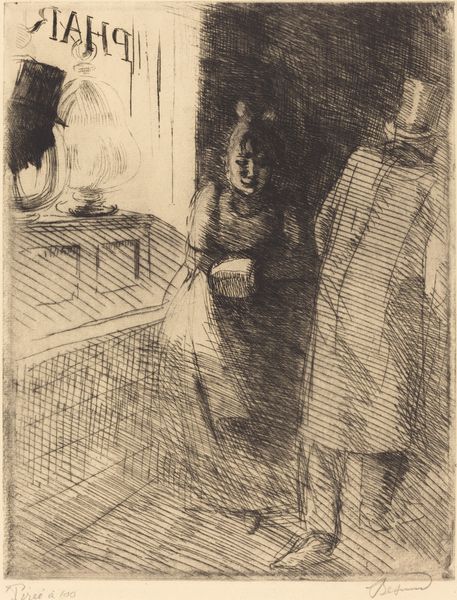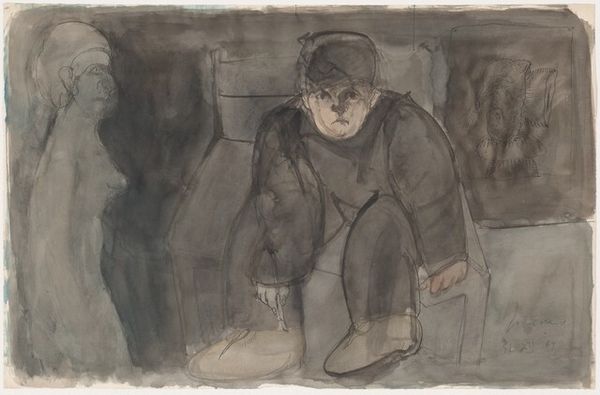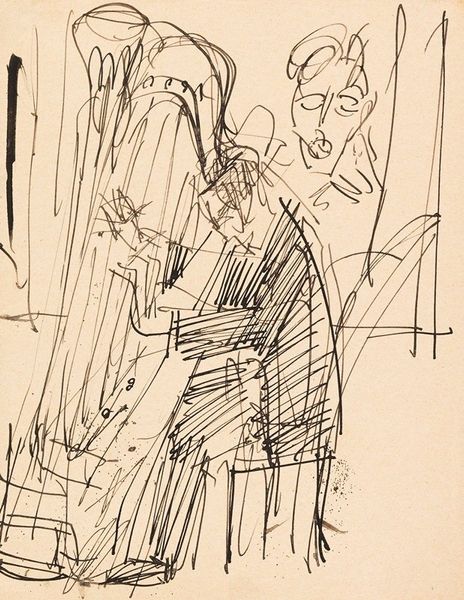
painting, ink, frottage
#
portrait
#
abstract painting
#
painting
#
graffiti art
#
street art
#
ink
#
acrylic on canvas
#
portrait art
#
frottage
Dimensions: 19.5 x 13.8 cm
Copyright: Maria Bozoky,Fair Use
Curator: What strikes me first is the pervasive feeling of anxiety within Maria Bozoky's "Kafka: The Castle," painted in 1992. The somber palette certainly contributes to this feeling, along with the gestural linework. Editor: I see it, this anxious mood emerging directly from the artistic process. The work appears to be created with ink and frottage techniques along with acrylics, evidenced by the textural build-up that create visible layers of process, allowing the raw materials to communicate directly with us about what the artwork is—a trace of Bozoky's creative labor. Curator: It’s interesting you highlight those particular media. Looking closer, one can appreciate how the transparent washes build upon the frantic ink scribbles and that creates an ethereal effect. It’s as if the subject, engaged in this indistinct act of speaking into his own hands instead of into the phone in front of him, is only partially tethered to reality. His relationship to the window frame as backdrop seems just as unstable. The use of this unstable depiction really gets to the core themes within the Kafka novel to which this alludes. Editor: Absolutely. We have to also consider that Bozoky created this piece during the cultural flux of the early 1990s, reflecting societal uncertainties during post-communism by experimenting with media that mirrored instability through unconventional manipulation of materials like acrylic paint combined with frottage for texture, rather than trying to mimic representational realism, and in the labor involved the material communicates her message about the anxieties from the book to her canvas in a very real, transferable way. Curator: I agree completely. Understanding this portrait through its historical and social location within that post-communist context underscores Bozoky's interest in probing psychological tension. As the title indicates, the figure portrayed is wrestling against invisible obstacles; and we as the viewer now observe this frozen, tortured performance—the individual against institutional forces. Editor: And it’s so important that Bozoky chose acrylic, ink and frottage—everyday media—instead of something considered of a higher pedigree within art history as a further engagement against tradition. This emphasizes the relationship between the work's material processes and how our own interpretation of history shapes these very materials around us! Curator: Viewing “Kafka: The Castle,” then, becomes more than simply looking at a portrait. We observe an artifact, one formed through—and commenting on—personal and political processes. Editor: A poignant consideration of both material presence and absent certainties—very powerful indeed!
Comments
No comments
Be the first to comment and join the conversation on the ultimate creative platform.
